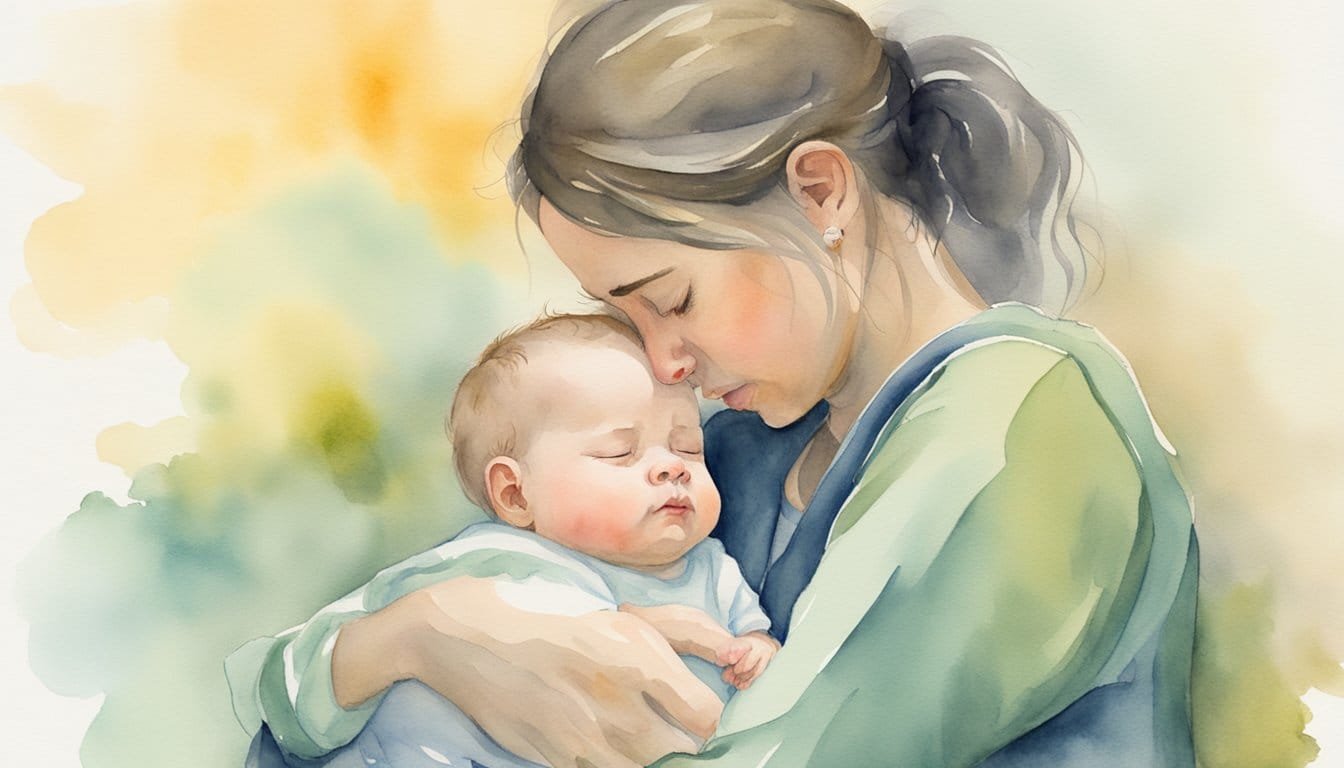Understanding Baby Cries
Crying is a newborn’s main form of communication, and each cry can convey a different need. Parents and caregivers can decode the subtle nuances in a baby’s cries to address their discomforts. Here’s a quick guide to decipher what a child may be trying to say through their tears:
-
Hunger: This is often the first guess when a baby cries. Look for signs of hunger such as lip-smacking or sucking on fingers.
-
Dirty Diaper: Babies may cry when they’re uncomfortable because of a wet or dirty diaper. A quick check will let you know if it’s time for a change.
-
Need for Sleep: Over-tired babies tend to fuss and cry more. Recognizing symptoms of sleepiness, such as rubbing eyes, can help you act before the tears start.
-
Overstimulation: Loud noises or a busy environment can overwhelm a baby, leading to a distressed cry. A calmer, quieter setting might be the remedy.
-
Discomfort from Gas or Reflux: When babies cry after feeding, it could indicate issues like gas or acid reflux. They might need to be burped or held upright for relief.
-
Illness or Pain: Persistent or unusual crying could be a sign of illness or injury. If you suspect your baby isn’t feeling well, a visit to the healthcare provider is important.
-
Seeking Attention: Sometimes, babies just want to be held. A crying baby might simply be asking for cuddles.
A baby’s cry can be a complex mix of sounds and rhythms. Experienced caregivers gradually learn to interpret the various types of crying. For those still learning, taking the time to patiently listen and respond to crying can be invaluable. The analysis of paralinguistic features can offer insights into the nuances of a baby’s cry, shedding light on this unique form of early childhood communication.
Soothing Techniques

When a baby cries, caregivers often seek effective methods to soothe their little ones. Employing a combination of physical comfort, proper feeding, and creating a serene environment can play a significant role in calming a fussy infant.
Physical Comfort
Physical touch is fundamental to comforting an upset baby. Gentle rocking or cuddling can help infants feel secure and loved, while swaddling them in a blanket replicates the coziness of the womb. It’s important to always handle your baby with care, remembering to never shake them, as this can cause serious harm. Movement, such as a smooth car ride or stroller walk, also aids in soothing through motion.
Do:
- Hold and rock gently
- Swaddle appropriately
- Use calming movements
Don’t:
- Overbundle if too hot
- Leave unattended in motion-based devices
Feeding and Burping
Feeding is a common solution to a baby’s cries, as they often signal hunger. Whether breastfeeding or bottle-feeding, ensuring the baby latches on correctly can reduce discomfort. After feeding, burping the baby helps release any trapped air, which, if ignored, may cause more fussiness. Watch for signs of hunger and also be mindful of overfeeding, which might lead to spitting up or distress.
- Checklist for Feeding:
- Correct latch during feeding
- Signs of fullness to prevent overfeeding
- Gentle burping post-feeding
Creating Calm Environments
Crafting a calmer space can significantly help to relax a crying baby. Use of white noise or soft music can mimic the ambient sounds of the womb and provide a comforting atmosphere. White noise machines or a simple fan can be effective for this purpose. Keep the room temperature comfortable, not too hot or cold, and consider giving your baby a warm bath to promote relaxation.
- Environment Tips:
- Play soft music or soothing sounds
- Maintain a pleasant room temperature
- Consider a warm bath for comfort
Creating a sense of peace and comfort for your baby doesn’t require any magic—it’s often about going back to basics with physical comfort, meeting their needs through feeding, and setting the stage for tranquility by creating calm environments.
Health and Nutrition

It’s essential to distinguish between a baby’s typical fussiness and potential health issues that may cause discomfort. Proper nutrition plays a crucial role in a baby’s development and can impact how much and how often they cry.
Recognizing Illness
Babies communicate through crying, but excessive cry-fuss behavior can sometimes signal illness. Unusual symptoms like a high temperature, persistent vomiting, or signs of reflux should prompt parents to consult a health care provider. Colic can cause extended periods of crying, but it’s important to rule out other medical issues.
Dietary Considerations
When it comes to feeding, the type and frequency can influence a baby’s well-being. Overfeeding may lead to discomfort, while lactose intolerance can cause significant distress. Breastfeeding mothers should be aware that their diet, especially caffeine intake, can affect the baby. It’s always best to follow a health care provider’s advice on diet and feeding patterns to avoid the potential risks of overfeeding or underfeeding.
Developmental and Behavioral Aspects

When it comes to understanding why babies cry, it’s essential to consider various developmental stages and behaviors. Crying can be a baby’s way of communicating emotions such as stress, tiredness, or feeling overwhelmed. But beyond that, it often reflects a range of normal developmental processes.
Teething and Growth
Babies typically begin teething between 4 to 7 months of age. This period can be marked by significant teething pain, which can make them very fussy. Drooling and a desire to chew on objects are clear signs that a baby’s teeth are coming in. It’s not uncommon to see babies become increasingly irritable as new teeth emerge. Using a teething ring or a clean, chilled spoon can provide some relief for teething babies.
Learning to Self-Soothe
The journey towards independence includes learning to self-soothe. Babies develop this skill at different rates, and it involves them finding ways to calm down. Elements like pacifiers, slings, or a snug baby carrier can all assist in this process. Some babies may cry to exhaust themselves to sleep, while others may quietly hum. Crying it out is a method used by some parents, although it can be controversial and should be approached with understanding and caution.
Understanding Different Cries
A crying baby may be trying to communicate a variety of needs or feelings, including tiredness, boredom, or frustration. Interpreting different cries is crucial, as each type of cry can signify whether a baby is hungry, overwhelmed, or simply needs a burp. Recognizing the subtleties in their crying patterns helps caregivers provide appropriate responses, potentially reducing the duration and frequency of crying episodes.
Parents and caregivers learn to distinguish these cries over time and can become quite adept at understanding what their baby needs, deepening the bond between them.
Parental Well-being

Navigating the roller coaster of emotions that comes with a crying baby can significantly strain a parent’s well-being. It’s common to feel tired and stressed, but taking care of yourself and building a robust support network can help mitigate the tension.
Coping with Stress
When an infant’s cry pierces the air, a parent’s stress levels can soar. Key strategies to combat this include:
- Recognizing Triggers: Understanding what stresses you out is the first step in managing it.
- Stress-Relief Techniques: Such as deep-breathing exercises, meditation, or yoga can be effective in releasing tension.
Implementing simple self-care routines like making time for a favorite hobby or ensuring enough rest can also be a crucial defense against potential burnout.
Building a Support System
The proverb “It takes a village to raise a child” holds true, especially for parents dealing with the discomfort and continuous demands of a crying baby. Creating a support system involves:
- Reaching Out: Don’t hesitate to ask for help from family and friends.
- Sharing Responsibilities: If possible, alternate caregiving duties to ensure each caregiver can relax and recover.
By surrounding yourself with a network of help, parents can alleviate some of the emotional weight and find a space to rejuvenate, thus enhancing their capacity to care for their little one more effectively.

